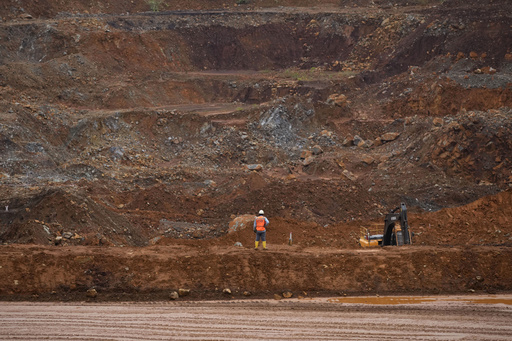
JAKARTA, Indonesia — The worldwide demand for metals and minerals used in various technologies, such as cellphones, electric vehicles, and energy-generating coal, has surged since 2000. This rapid expansion has led to significant environmental degradation, particularly in tropical forests, and has resulted in the displacement of Indigenous and local populations. A report released recently by the World Resources Institute outlined these critical issues.
The study revealed that from 2001 to 2020, nearly 1.4 million hectares (or approximately 3.5 million acres) of forests were lost globally due to mining activities, an area comparable to that of Montenegro. Alarmingly, around one-third of this loss occurred in tropical primary rainforests, with even protected areas suffering damage.
The loss of these trees has contributed to the release of 36 million tons of carbon dioxide equivalent each year into the atmosphere, which is roughly equivalent to Finland’s entire fossil fuel emissions in 2022. The report cautioned that these estimates are likely understated, as they do not account for indirect tree losses resulting from infrastructure developments related to mining, such as roads and storage sites.
The depletion of tropical primary rainforests is particularly alarming due to their high carbon content and rich biodiversity. These ecosystems play a crucial role in regulating local climates, affecting rainfall and temperature patterns. Mining activities typically involve the removal of vegetation and soil, which can exacerbate the effects of severe weather events and climate change-induced disasters. Additionally, such activities can lead to air and water contamination.
Aimee Boulanger, the executive director of the Initiative for Responsible Mining Assurance, emphasized the detrimental impacts of large-scale extraction on the environment and the communities dependent on these ecosystems.
The analysis identified that the bulk of mining-related forest loss occurred in eleven countries, with Indonesia and Brazil at the forefront. Other countries contributing significantly included Russia, the United States, Canada, Peru, Ghana, Suriname, Myanmar, Australia, and Guyana. In certain nations, Indigenous and local communities faced severe impacts, with reports indicating that in Suriname, Venezuela, and Ecuador, nearly two-thirds of the mining-related deforestation involved these communities.
Historically, gold and coal have been the main culprits behind deforestation linked to mining. Recent studies indicated that these two resources together accounted for over 70% of mining-related forest loss from 2001 to 2019. Although coal consumption is on the decline, it remains a dominant player in the global energy landscape. A study showed that from 2000 to 2019, a staggering 57% of tree cover loss linked to coal mining occurred in Indonesia, which has emerged as one of the largest coal exporters globally over the last decade.
The issue of deforestation linked to coal is not restricted to tropical regions; a study revealed that 20% of global tree cover loss due to coal mining also took place in the United States between 2001 and 2019. Specifically, around 120,000 hectares (or nearly 300,000 acres) of forest loss were associated with mining, particularly from surface coal mining activities concentrated in Kentucky, West Virginia, Virginia, and Tennessee.
The recent surge in gold mining, which initiated post the 2008 financial crisis as gold prices soared, is primarily responsible for tree loss in Brazil and Ghana. Furthermore, the growing demand for critical materials needed for smartphones, solar panels, and electric vehicles has created a new impetus for mining activities. Noteworthy concerns arise from Indonesia’s nickel boom, Myanmar’s obscure rare earths sector, and cobalt mining in the Democratic Republic of the Congo.
The World Resources Institute noted that there is a potential pathway for miners to enhance practices and mitigate environmental harm as new mines are developed. This includes employing the latest technology, devising rehabilitation plans, and instituting comprehensive environmental monitoring processes.
Michael Goodsite, an expert in sustainable mining practices, underscored the pressing dilemma: achieving necessary mineral extraction without causing additional environmental damage. He advocated for a holistic perspective and systematic approach to tackle these intertwined challenges effectively.
